Foraging Behaviour
*links to papers below

The gannets' landings of prey on Funk Island reflect decadal changes in pelagic food webs. During the 1970s and 1980s landings were dominated by migratory warm-water prey (mackerel, Atlantic saury, short-finned squid). Following a centenially significant cold-water pertubation in 1991, their landings shifted to cold-water fishes (capelin, Atlantic salmon, herring). In 2005, for the first time in 16 years, landings were again dominated by warm water fishes and corresponded with major mackerel fisheries throughout the region (Montevecchi, 2007)*.
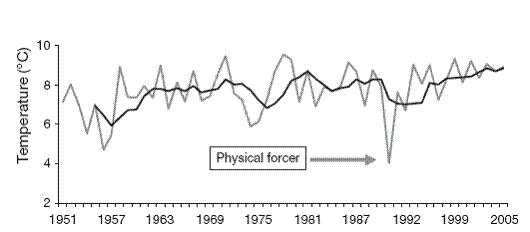
June to July annual (grey) and 5 year running average (black) of sea surface temperature anomalies obtained from Hydrographic Station 27. Arrow indicates the most extreme negative anomaly on record that acted as a physical forcer in 1991 to induce a shift in the pelagic food web (DFO 2005) (Montevecchi, 2007)*.
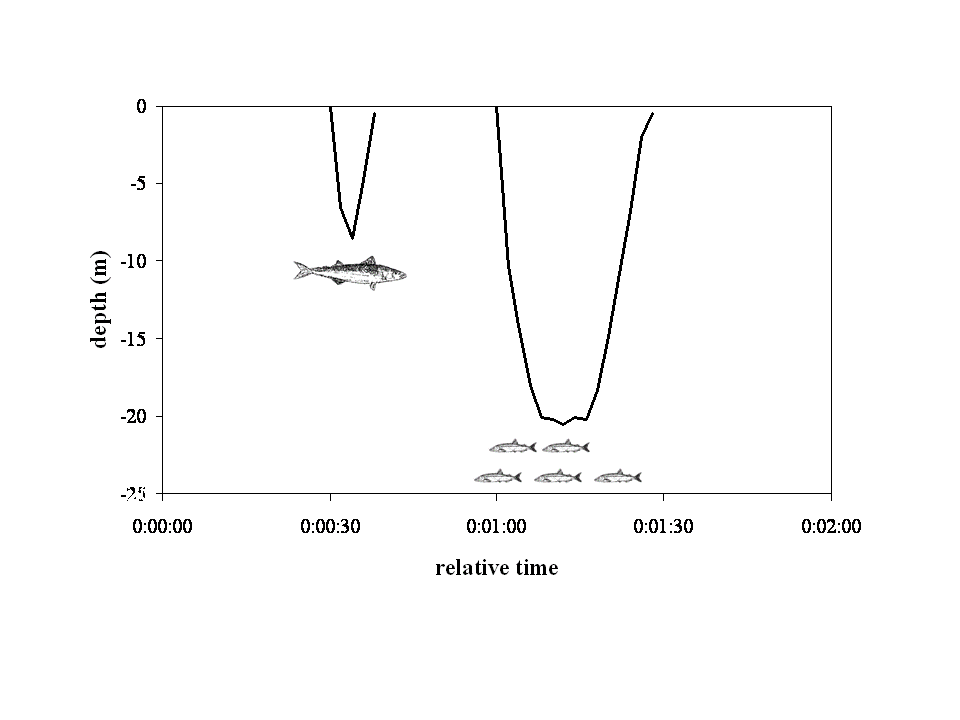
Foraging decisions: Different dives for different prey. Gannets tend to make rapid shallow "V" dives for larger, fast-moving prey such as mackerel. They make deeper "U" dives for smaller prey such as capelin. (Garthe et al, 2000)*
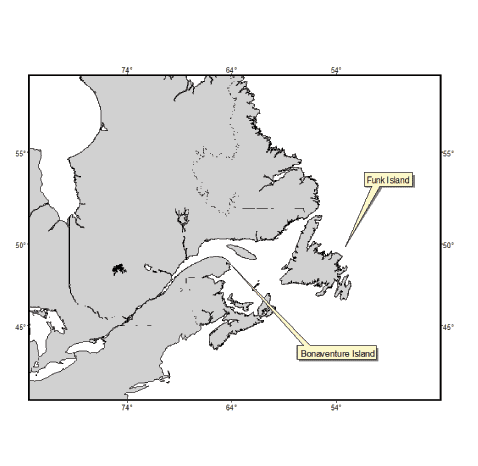
Study sites for Northern Gannets at Funk Island in the Low Arctic waters off the NE Newfoundland coast and at Bonaventure Island in the Boreal waters of the Gulf of St. Lawrence. (Garthe et al., 2007)*
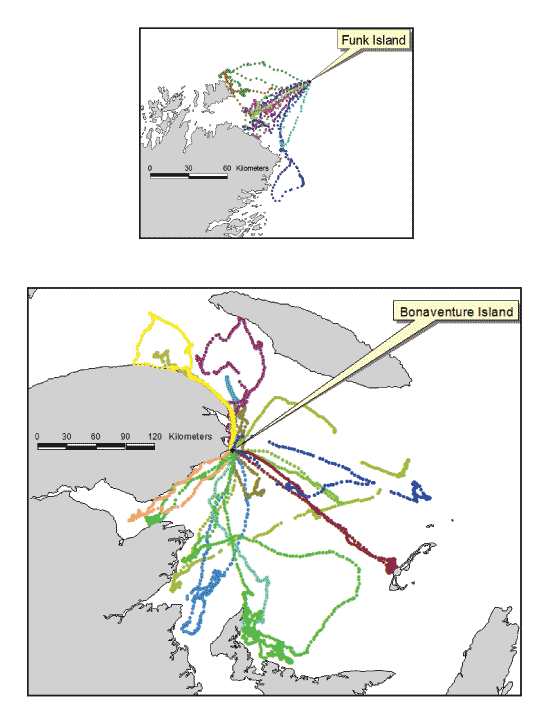
GPS tracks of gannets foraging from Funk Island on inshore spawning shoals of capelin and of gannets foraging from Bonaventure Island on a diversity of pelagic prey throughout the Gulf of St. Lawrence during 2003. (Garthe et al., 2007)*
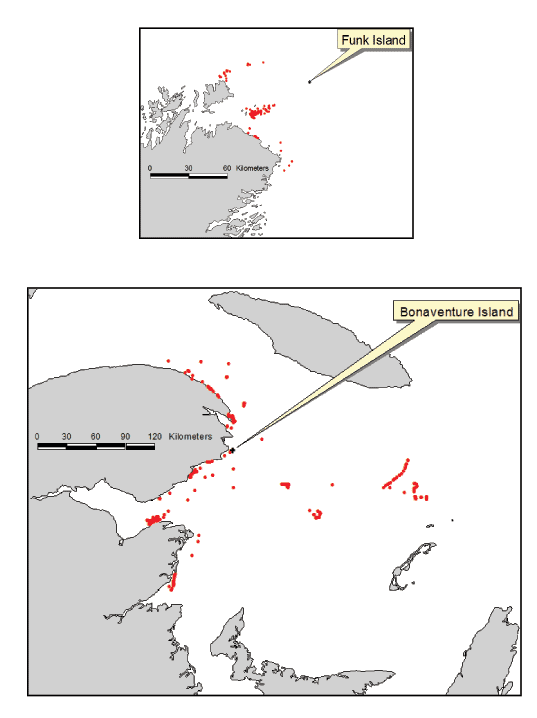
Dive sites of gannets foraging from Funk and Bonaventure Islands showing hotspots of activity during 2003. (Garthe et al., 2007)*
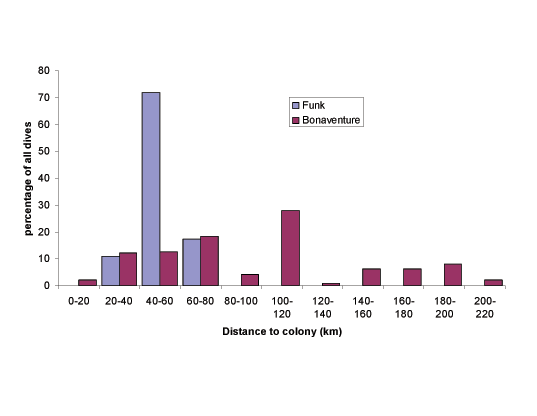
Gannets from Funk Island dived significantly closer to the colony than did birds from Bonaventure Island during 2003. (Garthe et al., 2007)*
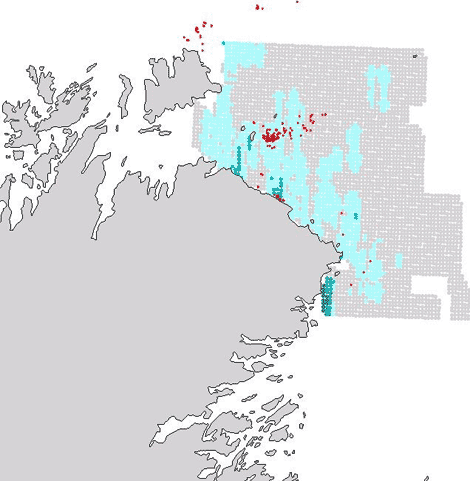
Dive sites of gannets foraging from Funk Island and distributions of capelin in the upper water column (light blue) during 2003.
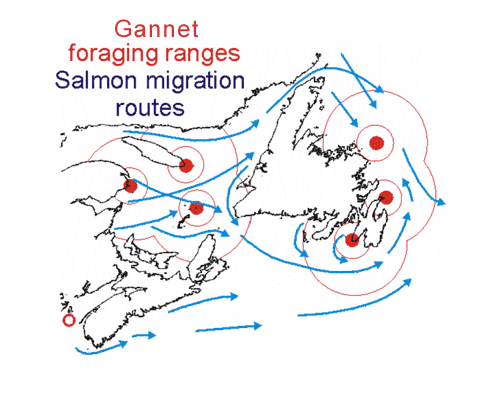
Locations of the six Northern Gannet colonies in North America: Funk Island, Baccalieu Island, Cape St. Marys, Magdalen Bird Rocks, Anticosti Island, and Bonaventure Island. Circles are 60 and 180 km radii and represent the median and maximum foraging ranges of Northern Gannets. Arrows indicate post-smolt migration routes as proposed by Reddin (1988) and Montevecchi et al. (1988b).